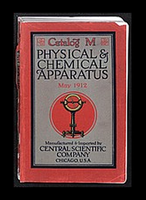








Mail order is the buying of goods or services by mail delivery. The buyer places an order for the desired products with the merchant through some remote method such as through a telephone call or web site. Then, the products are delivered to the customer. The products are typically delivered directly to an address supplied by the customer, such as a home address, but occasionally the orders are delivered to a nearby retail location for the customer to pick up. Some merchants also allow the goods to be shipped directly to a third party consumer, which is an effective way to send a gift to an out-of-town recipient.
Mail-order retailing became a big business in Chicago. During the half century that followed the establishment of a mail-order company by Aaron Montgomery Ward in 1872, Chicago companies dominated the business of selling directly to consumers across the country by using catalogs and deliveries through the mail. Montgomery Ward and Sears, both based in Chicago, were the leaders of the early mail-order industry and became giant enterprises through catalog sales long before they began to open retail stores. Even after the 1920s, when the growth of the mail-order business slowed, Chicago companies continued to stand among its leaders. By the end of the twentieth century, when Wards went out of business entirely and Sears no longer issued giant catalogs, the city's mail-order industry was no longer the precocious adolescent it had been in 1900. Nevertheless, Chicago remained home to several leading companies in an evolving but still important sector of the economy.
Montgomery Ward & Co., the world's first giant mail-order enterprise, started in Chicago just after the fire of 1871. Aaron Montgomery Ward, a native of New Jersey, arrived in the city just after the Civil War. He soon found a job with Field, Palmer & Leiter, the dry-goods wholesaler and retailer that would become Marshall Field & Co. Ward left town to work as a salesman in St. Louis and the South, but he soon returned. In 1872, when he was 28, he opened his own business. Ward's company tried to convince rural consumers to buy a variety of goods (including clothing, furniture, and hardware) through the mail. It turned out that many farm families were willing and able to do so, especially after Ward initiated a policy of “satisfaction guaranteed or your money back” in 1875. Among Ward's first customers were members of the Patrons of Husbandry (or Grange), an agrarian organization that liked the idea of circumventing local mercantile middlemen by buying directly from Chicago. Ward advertised by sending out a catalog, which started as a single page but expanded quickly, growing to 32 pages in 1874, 152 pages in 1876, and nearly 1,000 pages by 1897. By the 1880s, the growing volume of orders from this catalog led Ward to employ over a hundred Chicagoans as clerks; by 1897, this workforce was up to over a thousand. By that time, Ward's company had become Chicago's leading user of the U.S. mails, and annual sales had ballooned to about $7 million.